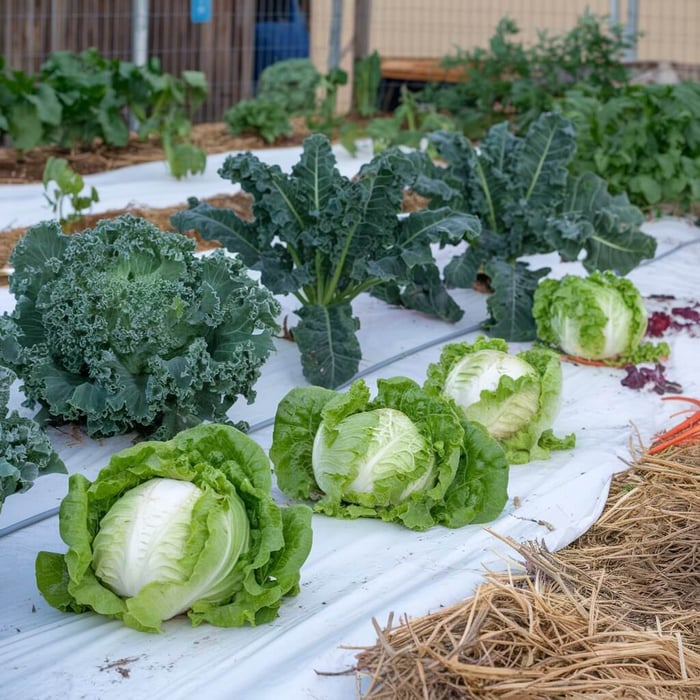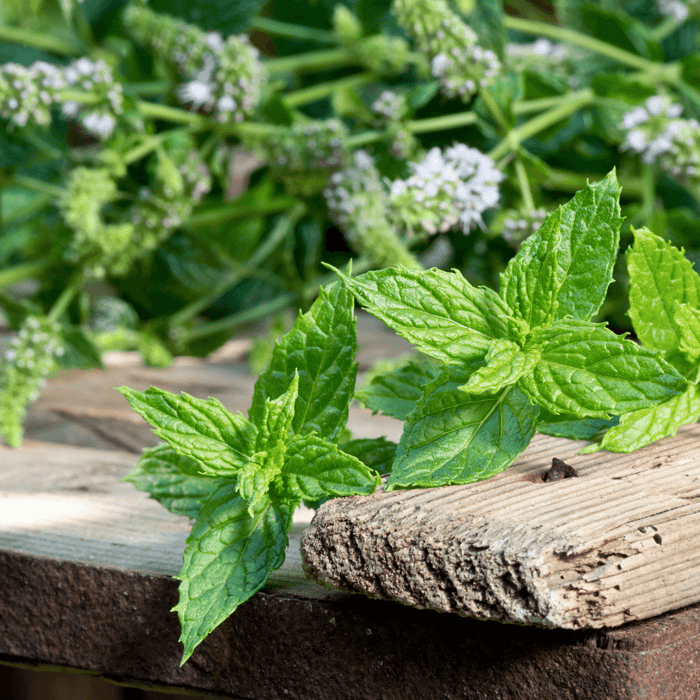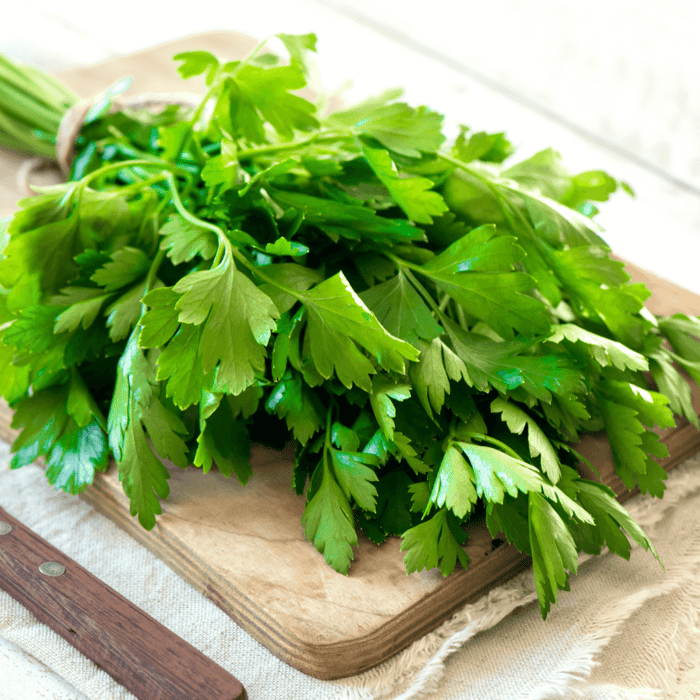Sweet basil, scientifically known as Ocimum basilicum, is an aromatic herb belonging to the Mint family. With its vibrant green leaves and delightful fragrance, sweet basil has become a staple in kitchens worldwide, particularly in Italian cuisine. Learning how to grow sweet basil from seed will help you have fresh basil in your kitchen for all your favorite dishes.
Its versatile nature allows it to elevate various dishes such as pasta sauces, salads, soups, and cocktails. The distinct flavor profile of sweet basil adds a refreshing and slightly peppery taste that enhances the overall culinary experience. Growing sweet basil is a favorite amongst gardeners to elevate their dishes!
The Importance of Growing Sweet Basil from Seed for Freshness and Variety
Growing sweet basil from seed offers numerous benefits compared to buying established plants. Firstly, it gives you complete control over the growing process, ensuring the highest freshness and quality.
By starting with herb seeds, you can cultivate your sweet basil plants under optimal conditions right from the beginning. This approach eliminates any concerns regarding pre-existing diseases or pests that may be present when purchasing live plants.
Furthermore, growing sweet basil from seed grants you access to varieties not commonly found in nurseries or grocery stores. While Genovese sweet basil is widely available commercially, other exciting options like Thai basil with its unique anise-like flavor or Lemon basil with its citrusy notes are available.
You can experiment with flavors and create a bespoke herb garden tailored to your tastes by sowing different sweet basil seeds. Additionally, starting with herb seeds enables you to extend the growing season by kickstarting cultivation indoors before transplanting outdoors after the spring frost has passed.
This early start maximizes your harvest potential by providing ample time for the plants to establish themselves during warm weather. Growing sweet basil from seed empowers herb enthusiasts with freshness control, variety expansion possibilities, and an extended growing season – making it an invaluable endeavor for anyone passionate about cultivating this beloved herb.
$2.49
Sweet Basil Seeds - Heirloom, Non-GMO, Non-Hybrid, Open-Pollinated – Easy to Grow Culinary Favorite Looking to grow your own flavorful Sweet Basil? Our premium heirloom, non-GMO, non-hybrid, open-pollinated Sweet Basil seeds are the perfect choice for gardeners of all skill… read moreSweet Basil Seeds

Understanding sweet basil plants
- Days till maturity: Sweet basil typically reaches maturity about 60 to 70 days after planting.
- Planting depth: Seeds should be planted at a shallow depth of about ¼ inch.
- Plant spacing: Space basil plants about 10 to 12 inches apart.
- Days to germination: Basil seeds usually germinate within 5 to 10 days under ideal conditions.
- Indoors or Direct Sown: Basil can be started indoors and transplanted outside or directly sown into the garden.
- Full Sun or Partial Shade: Basil thrives in full sun but can tolerate partial shade.
- When to harvest: Harvest basil leaves as needed, starting when the plant is about 6 inches tall. Regular harvesting encourages more growth.
- How tall does the plant get? Sweet basil plants typically grow to a height of 18 to 24 inches.
- How wide does the plant get? The plant's width can range from 12 to 18 inches.
- Native: Sweet basil is native to tropical regions from central Africa to Southeast Asia.
- Family: Sweet basil belongs to the mint family, Lamiaceae.
Choosing high-quality seeds
When growing sweet basil from seed, selecting high-quality seeds is crucial for successful germination and healthy plant development.
Thanks for giving us a shot at Gardeners Basics when you choose your basil seeds for planting. We offer only the freshest seeds, getting shipments in from farmers monthly.
Preparing the Growing Environment
Indoor vs Outdoor Cultivation Options Based on Climate and Seasonality
Understanding your specific climate and seasonality is essential when deciding between indoor and outdoor cultivation of sweet basil. Sweet basil is a warm-weather herb, thriving in temperatures ranging from 70 to 90°F (21 to 32°C). Starting your basil seeds indoors may be the best option if you live in an area with a short growing season or frequent spring frosts.
Indoor cultivation provides greater control over temperature and protects delicate seedlings from adverse weather conditions. However, if you reside in a region with mild climates, direct outdoor sowing can be successful if the soil temperature remains consistently above 50°F (10°C) for optimal germination.
Selecting a Suitable Container or Plot with Good Drainage and Ample Sunlight Exposure
Whether you choose indoor or outdoor cultivation, selecting an appropriate container or plot for your sweet basil plants is crucial for their healthy development. Use seed trays or pots with drainage holes to ensure proper moisture management if growing indoors.
It's recommended to select containers that are at least 6 inches deep to allow space for adequate root growth. Choose a sunny location for outdoor planting that receives at least six hours of direct sunlight daily.
To maximize sunlight exposure, consider raised beds or containers on south-facing balconies or patios. Additionally, ensure that the chosen container has good drainage facilities to prevent waterlogging, which can lead to root rot.
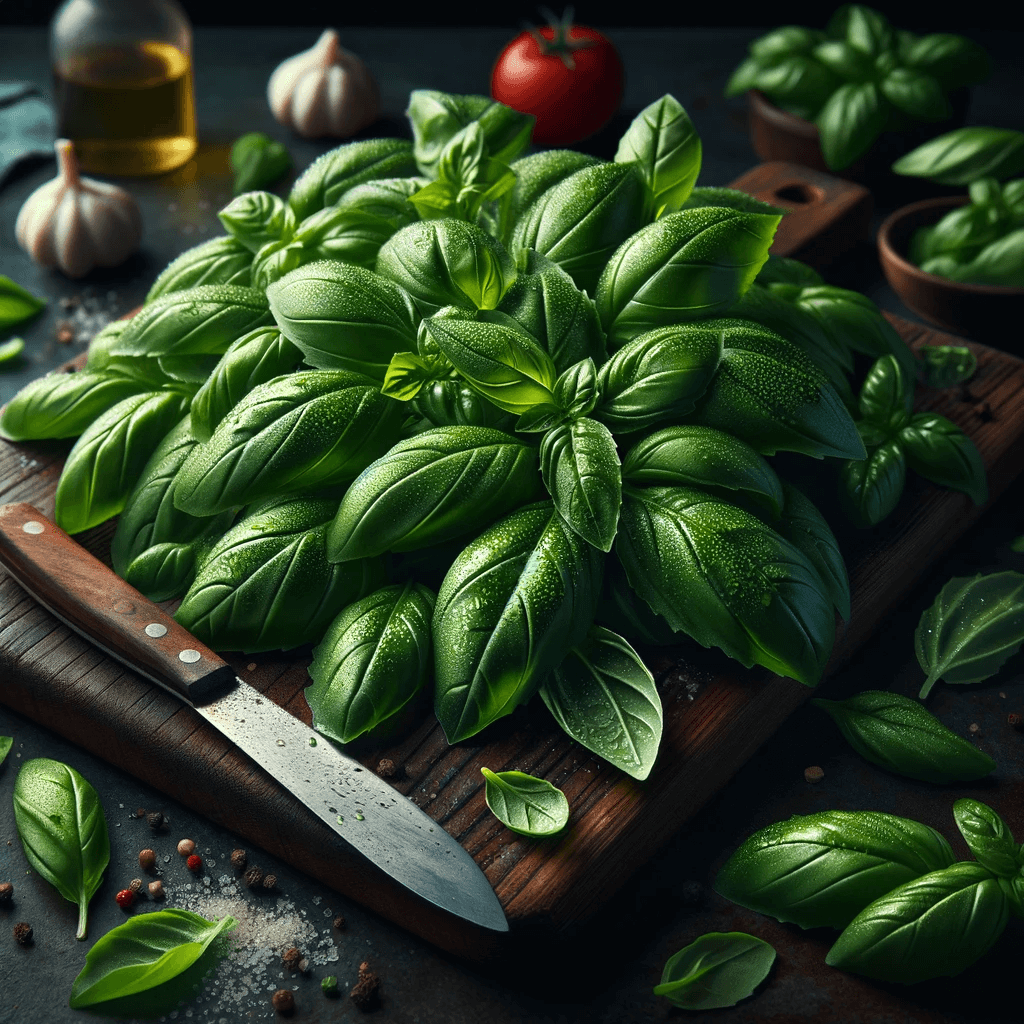
Preparing the Soil with Organic Matter to Enhance Fertility and Moisture Retention
The soil quality is crucial in determining the success of growing sweet basil from seed. Before sowing your basil seeds, enrich the soil by incorporating organic matter such as compost or well-rotted manure.
This helps improve soil fertility and enhances moisture retention, preventing excessive drying between watering sessions. Sweet basil thrives in well-draining soil with a slightly acidic to neutral pH between 6.0 and 7.5.
Conduct a soil test to determine the pH level and adjust it using organic amendments like peat moss or lime. Remember to keep the soil moist but not waterlogged throughout the growing season, as sweet basil prefers consistently moist conditions for optimal growth.
Incorporating these preparations into your sweet basil growing process will provide a strong foundation for your plants' health and productivity. By understanding indoor vs. outdoor cultivation options based on climate and seasonality, selecting suitable containers or plots with proper drainage and sunlight exposure, as well as preparing the soil with organic matter for enhanced fertility and moisture retention, you will be well on your way to successfully growing sweet basil from seed.
The Germination Process
Soaking Seeds: Unlocking the Potential
Learning how to grow sweet basil from seed begins with a simple yet significant step: soaking the seeds in warm water for 24 hours. This process, often overlooked, can accelerate germination by softening the seed coat and awakening the dormant life within.
Sowing Seeds in Nurture-Filled Homes
Once softened from soaking in water, scatter the basil seeds across the surface of the mix, giving each one ample space to stretch its roots and embrace its unique journey toward becoming a vibrant member of the Mint family.
Optimal Spacing: Breathing Room for Bountiful Basil
Like any herbaceous community, sweet basil plants thrive when given space to spread. Ensure optimal spacing between each basil seed as you sow them in trays or pots—approximately 2-3 inches apart should suffice.
This generous breathing room allows each seedling to access light, air circulation, and essential nutrients without crowding its neighbors.
Cover Seeds
Having placed your precious basil seeds upon their newfound dwelling, it is time to offer them a thin layer of soil or vermiculite to provide a protective covering. This shields the developing seeds from harsh environmental conditions while basking them in the warmth and moisture they crave during their delicate germination period.
$9.95
5 Basil Seeds Variety Pack – Grow Aromatic, Flavorful Basil from Non-Hybrid, Open-Pollinated Seeds Introducing our 5 Basil Seeds Variety Pack – the perfect choice for any herb garden enthusiast or culinary adventurer. This premium selection of basil seeds offers an… read moreBasil Seeds For Planting | 5 Variety Pack
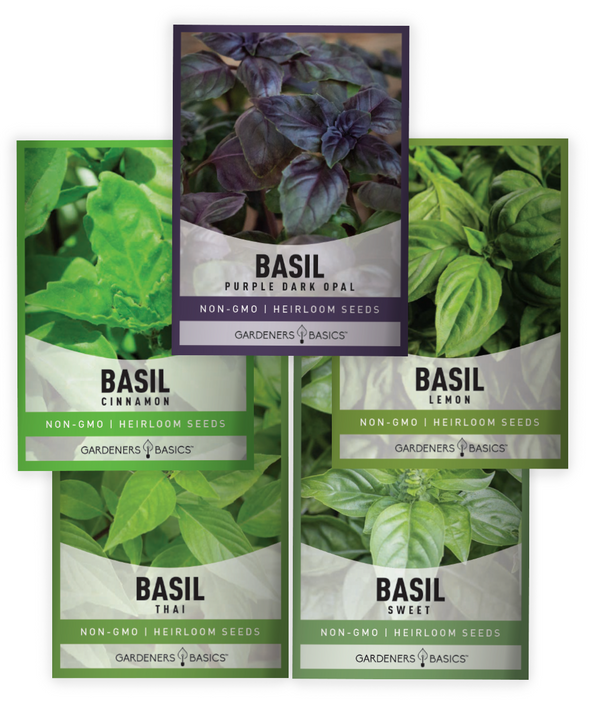
Moisture Mastery: Balancing Act of Hydration
Moisture is the lifeblood that sustains our tender basil seeds, but like any precious resource, it must be handled carefully. Maintaining consistent moisture levels in the seed trays or pots by keeping the soil moist but not saturated—avoiding arid desolation and drowning floods.
A fine misting spray or a carefully executed watering technique can ensure these young lives receive enough liquid sustenance without overwhelming their fragile bodies.
Providing Ideal Growing Conditions
Temperature Requirements for Germination (around 70-75°F)
Maintaining the correct temperature is crucial to ensure the successful germination of your sweet basil seeds. Sweet basil, scientifically known as Ocimum basilicum, thrives in warm weather conditions.
The ideal temperature range for germination is around 70-75°F (21-24°C). You can monitor the temperature using a thermometer or a seedling heat mat designed to provide consistent warmth.
If your ambient room temperature is more relaxed than the desired range, consider placing the seed trays near a warm spot in your house, such as on top of a refrigerator or near a heating vent. Ensuring the seeds are kept within this optimal temperature range will significantly increase the chances of successful germination.
Providing Sufficient Sunlight (at least six hours per day) or Using Grow Lights as an Alternative
Sweet basil requires ample sunlight to thrive and produce flavorful leaves. It thrives best with at least six hours of direct sunlight each day. If you are living in an area with limited sunlight or growing sweet basil indoors, you can use grow lights to supplement natural light.
Place the grow lights approximately 6-12 inches above the seedlings to ensure they receive adequate light intensity without burning them. Remember that sweet basil grown solely under artificial lights may require more extended exposure periods than natural sunlight, so adjust accordingly.
Maintaining Proper Distance between Grow Lights and Seedlings to Prevent Burning
When using grow lights for your sweet basil seedlings, it's vital to maintain an appropriate distance between the light source and the plants to prevent leaf burn due to excessive heat or intensity. Positioning them too close can scorch delicate leaves and hinder growth. As a general rule of thumb, keep the lights 6-12 inches away from the top of the seedlings.
Regularly monitor the foliage for any signs of heat stress, such as wilted or discolored leaves. If you observe these symptoms, raise the lights or reduce their intensity to create a more suitable environment for your basil plants.
You will create an optimal environment where your sweet basil seeds can thrive by providing ideal temperature and light exposure conditions. This will result in healthy seedlings ready to be transplanted once they have developed their true leaves.
Remember to check and maintain consistent moisture levels in the soil and provide necessary air circulation to prevent damping off disease and promote healthy growth. With proper care, you'll soon have a bountiful harvest of fresh basil leaves to elevate your culinary creations with vibrant flavor and aroma.
Transplantation Process
Waiting until seedlings have developed at least two sets of true leaves before transplanting
Once your sweet basil seeds have sprouted and developed their first set of tiny leaves, it is crucial to exercise patience and allow them to grow further. The delicate seedlings need time to establish a robust root system and develop at least two sets of true leaves.
These true leaves are different from the initial cotyledon leaves, as they resemble the characteristic shape of sweet basil. By waiting for this stage, you ensure your seedlings are strong enough to withstand the transplantation process and adapt successfully to new surroundings.
Hardening off seedlings by gradually exposing them
Before transplanting your sweet basil seedlings into their permanent home in the garden or larger containers, it is vital to harden them off gradually. This process helps acclimate the tender plants to outdoor conditions, preventing shock and ensuring survival.
Start by placing your seedlings outdoors in a sheltered spot for a few hours each day, gradually increasing exposure over a week or two. Be mindful of weather conditions and avoid exposing them to extreme temperatures or spring frosts that could harm or kill the young basil plants.
Conclusion - How To Grow Sweet Basil From Seed
As you embark on the journey of growing sweet basil from seeds, you are not only cultivating a beloved member of the Mint family but also indulging in an enchanting herb with numerous culinary applications. From sowing those tiny basil seeds with care, nurturing them through germination, providing ideal growing conditions, and finally transplanting them into an outdoor haven or spacious containers — every step contributes to the success of your herb garden. Imagine how delightful it would be to step outside on warm summer evenings and pluck fresh basil leaves straight from your thriving plants!
With dedication and attention to detail, you can become an expert in growing this aromatic herb and enjoy the satisfaction of creating delicious dishes enhanced by your homegrown sweet basil. Happy planting!
$15.95
The Ultimate Gourmet Basil Seeds Pack: 8 Varieties of Heirloom, Non-Hybrid Basil Introducing our 8 Gourmet Basil Seeds Variety Pack, the ultimate choice for basil lovers and home gardeners! This carefully curated selection of heirloom basil seeds includes non-hybrid, open-pollinated, and… read moreAssorted Gourmet Basil Seed Varieties | 8 Variety Pack
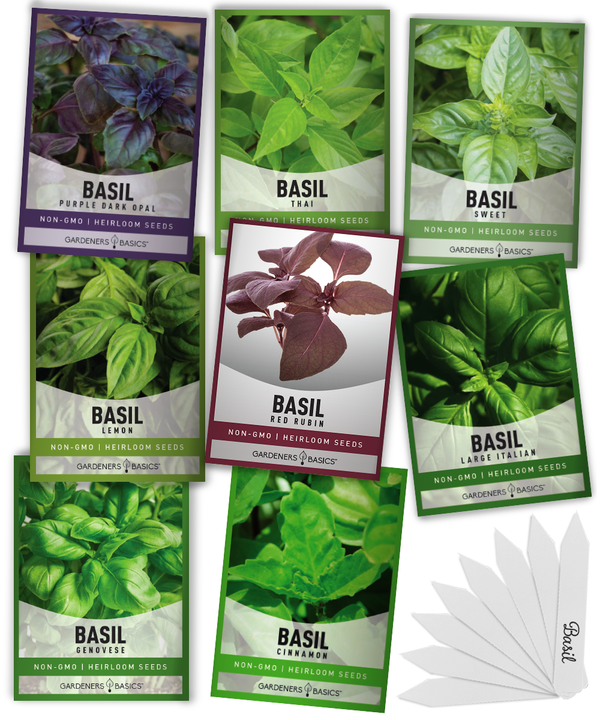
Frequently Asked Questions (FAQ) - How To Grow Sweet Basil From Seed
Q1: How do I purchase basil seeds from your website?
A1: Simply navigate to our 'Shop' section, select the basil seed variety you want, and add it to your cart. Follow the checkout process to complete your purchase.
Q2: Can I grow basil indoors?
A2: Absolutely! Basil can thrive indoors provided it has enough sunlight (at least 6 hours a day) and is watered regularly.
Q3: How long does it take for basil seeds to germinate?
A3: Basil seeds typically germinate within 5 to 10 days under optimal conditions, which include warm temperatures and consistent moisture.
Q4: When is the best time to plant basil seeds?
A4: The ideal time to plant basil seeds is after the last frost in spring. You can start any time for indoor gardens if you provide sufficient light and warmth.
Q5: How much water does basil need?
A5: Basil prefers moist but well-drained soil. Water the plant when the top inch of soil feels dry.
Q6: Can I grow basil in a pot?
A6: Yes, basil grows well in pots. Ensure the pot has adequate drainage holes and use a high-quality potting mix.
Q7: How do I harvest basil?
A7: Harvest basil leaves by snipping off the top leaves and stems. Regular harvesting encourages the plant to become bushier and produce more leaves.
Q8: What are the common pests that affect basil plants?
A8: Basil can be affected by aphids, spider mites, and whiteflies. Regularly inspect your plants and use organic pest control methods if needed.
Q9: How should I store unused basil seeds?
A9: Store them in a cool, dry place away from direct sunlight. Ideally, keep them in an airtight container.
Q10: Can I grow basil from the seeds of a basil plant?
A10: You can save and plant seeds from a mature basil plant. Ensure the seeds are dehydrated before storing them.





